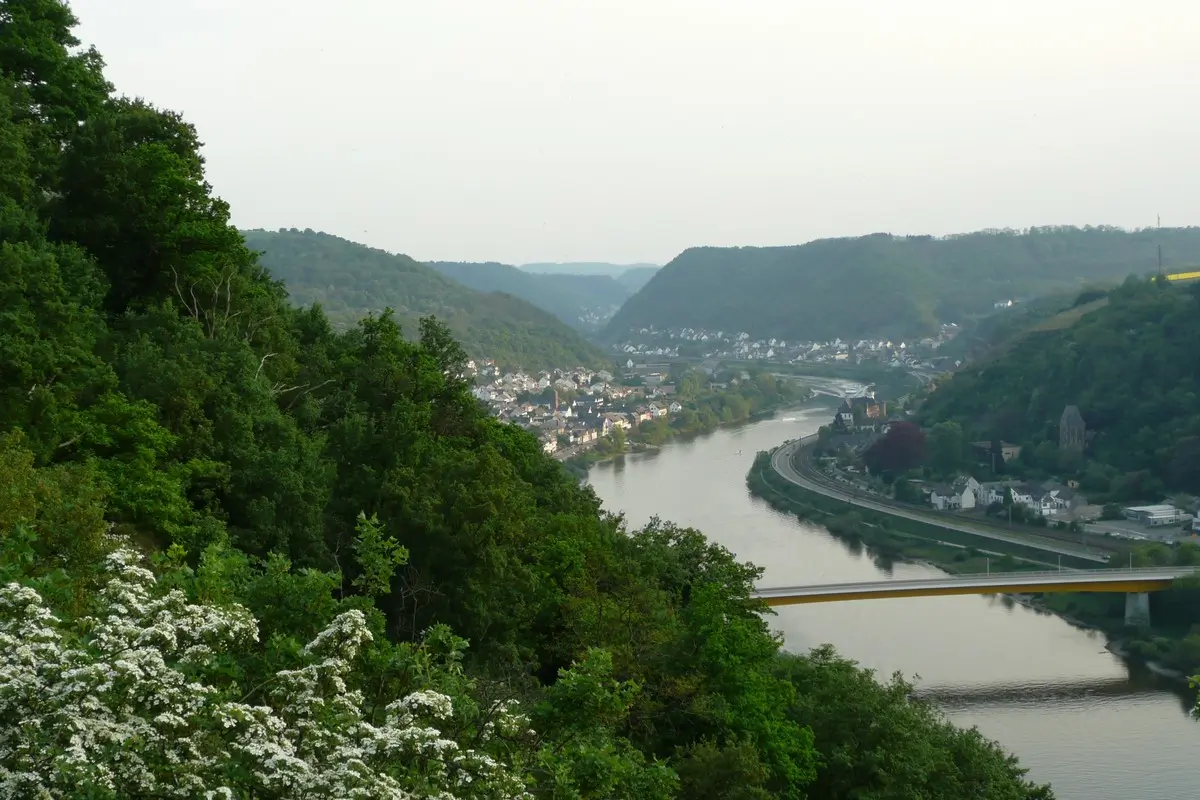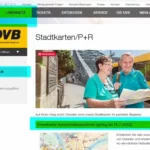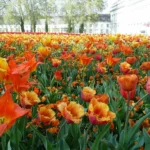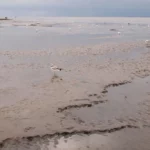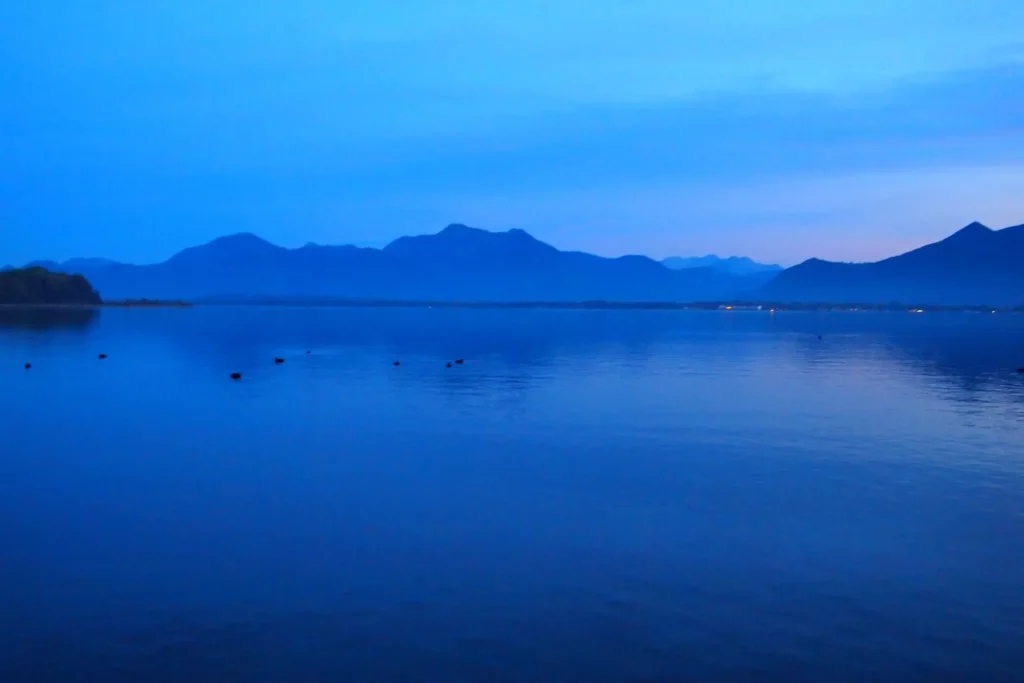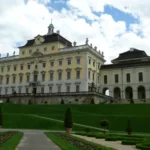Last Updated on 24/07/2023
The Moselle is a very beautiful river. In truth, we liked it more than the Rhine, clogged with transport, muddy, with brown water.
To make the river navigable, it was dammed in the middle of the 20th century, but still there are very few barges here. On one (left) side of the river there is a railway and a road, and there is a road partly on the right. There are also castles on the banks of the Moselle, but the main attraction is the local wines. We were in Cochem and Trier, visited the Eltz castle.
Castles on the Middle Rhine on the map. 1. From Rüdesheim to Bacharach
Rhine castles from Kaub to Koblenz and Lorelei rock
Rhine valley boat tours, public transport and welcome cards
Attractions around Frankfurt am Main, along the Rhine to Koblenz
Technik museum Speyer
Castle Road (Burgenstrasse). 1. Neckar cycle route Mannheim – Eberbach
What to see in Heidelberg
Local public transport in Germany
Read about German wines and wine regions.
I don’t know if the banks of Moselle are higher or steeper as Rhines, but several tried descent / ascent to / from the river were very extreme, so you need to be especially careful when choosing a route for a car.
Castle Eltz
How to get to Castle Eltz
Once on Deutsche Welle I came across a photograph of Eltz Castle and a story about how interesting it is there. The only thing the author did not tell – the difficulties of getting there. Since we were with the small child and did not expect an trap, this greatly spoiled our nerves. So, first about the difficulties of the road, then about the reward for them.
Hikers get by train to the Moselkern station and walk along the Eltz stream to the castle of the same name along the forest road, and at the end climb the stairs to the castle.
Others get to one of the parking lots and walk from them. This is where you need to be watchful. Do not take the first sign to the castle on the road from Cochem. A steep and narrow serpentine road awaits you, along which, for some reason, cyclists and pedestrians are going along, not to mention oncoming cars.
But that’s not all. You drive up to the parking sign and then suddenly you find out that you have to go 2 km, the strollers don’t pass, the old people with sticks too, and if that doesn’t suit you, please go around 18 km on rural roads. Ok, crossed-out strollers and sticks can mean just a staircase. But no! There is also a staircase. But the main thing is a long, steep descent down the forest. The old people (without sticks) met on the way, red and exhausted, wandering up to the cars, presented an absolutely miserable picture.
Now about the official parking lot, where the head of the family had to be sent, when it became clear that the return trip was impossible. This is the second sign from Cochem or the first from Koblenz, the turn in the village of Moselkern. Official parking is also in the forest and also on the mountain. The asphalted path is also relative steep, but is with stroller passable. A small bus runs from the end of the parking lot (closest to the castle).
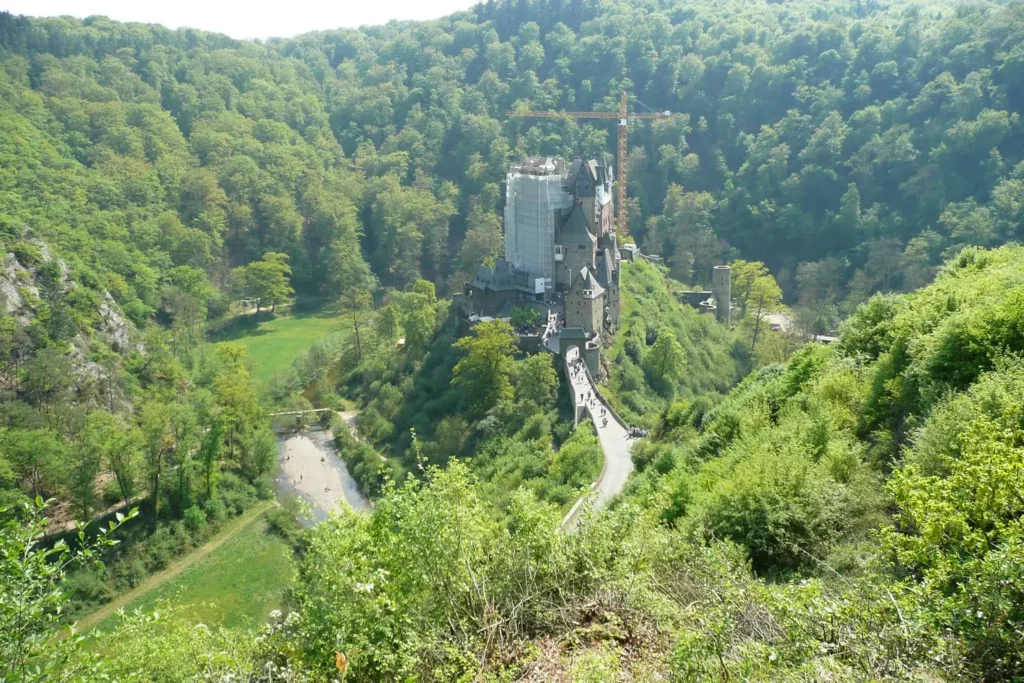
Short history of castle Eltz
The construction of the castle began in the 9-10th centuries. Then a house appeared, protected by earthen walls and wooden fences. The main stage of construction took place in the 11-13th centuries, at the same time the castle got its name. In 1268 it was divided among three brothers. The only armed conflict occurred in 1331-1336, when the owners of Eltz, together with other knights, opposed the claims of the archbishop of Trier.
In the 15-17 centuries the owners continued to expand and complete the castle, making it more comfortable. Up to 100 people lived in the castle in more than a hundred rooms. In different eras, family members have held various important positions, including the Archbishop of Trier, Reich Chancellor. During the War of the Palatinate Succession, Hans Anton zu Eltz served very successfully in a high post in the French army, which saved the castle from destruction unlike the most of Rhine’s castles.
In 1815, the entire castle passed into the possession of one person. In the 19th century a careful restoration was carried out (which cannot be said about many castles that have been converted in the “romantic” style).
Castle Eltz (Burg Eltz)
Let us now tell you why you should go there. The castle is really very beautiful, it looks romantic and at the same time is absolutely not a remake. The fact that it was depicted on German 500-mark banknotes speaks volumes.

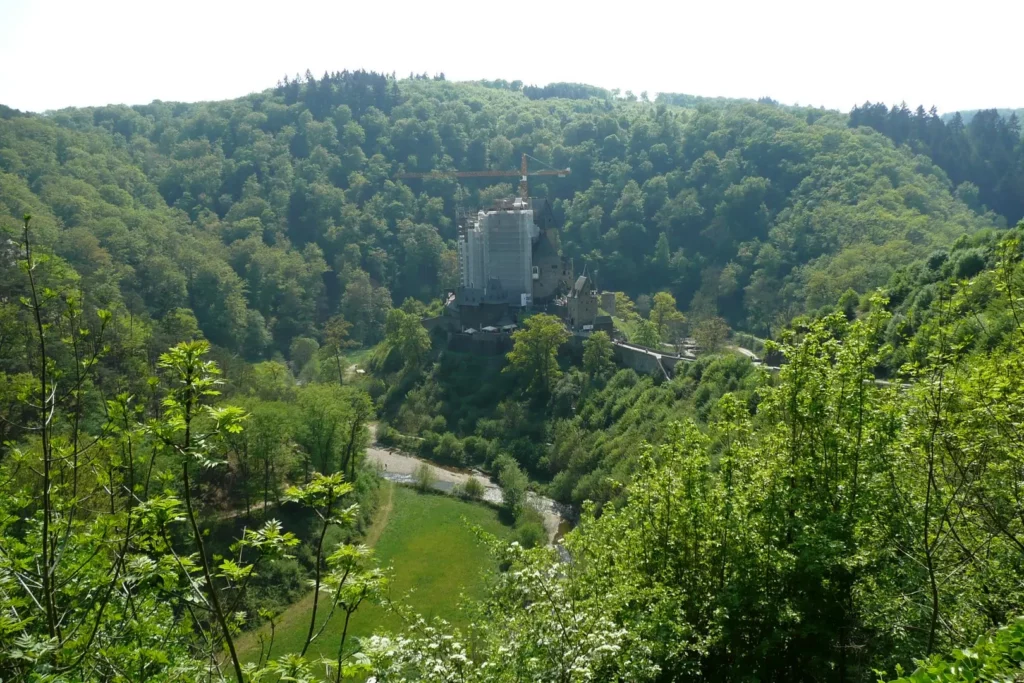
Only once in its history was the castle taken by enemy troops who were besieging with the hastily built Trutzelz castle on the mountain opposite. But it has never been destroyed and, unlike Marksburg, has always been inhabited and inhabited by one rich noble family, whose descendants continue to own the castle. The main owner, title holder, lives in Eltville and Frankfurt am Main. Which, of course, is not surprising – who wants to get into such a jungle every day.
A visit to the castle consists of two parts: a guided tour of the historic chambers and a self-guided tour of the treasury. Tours must be waited in the small courtyard. Guided tours in English are conducted periodically. Of the entire castle, few rooms are shown, obviously the oldest and least comfortable rooms, ten rooms in total. The tour lasts about 40 minutes.
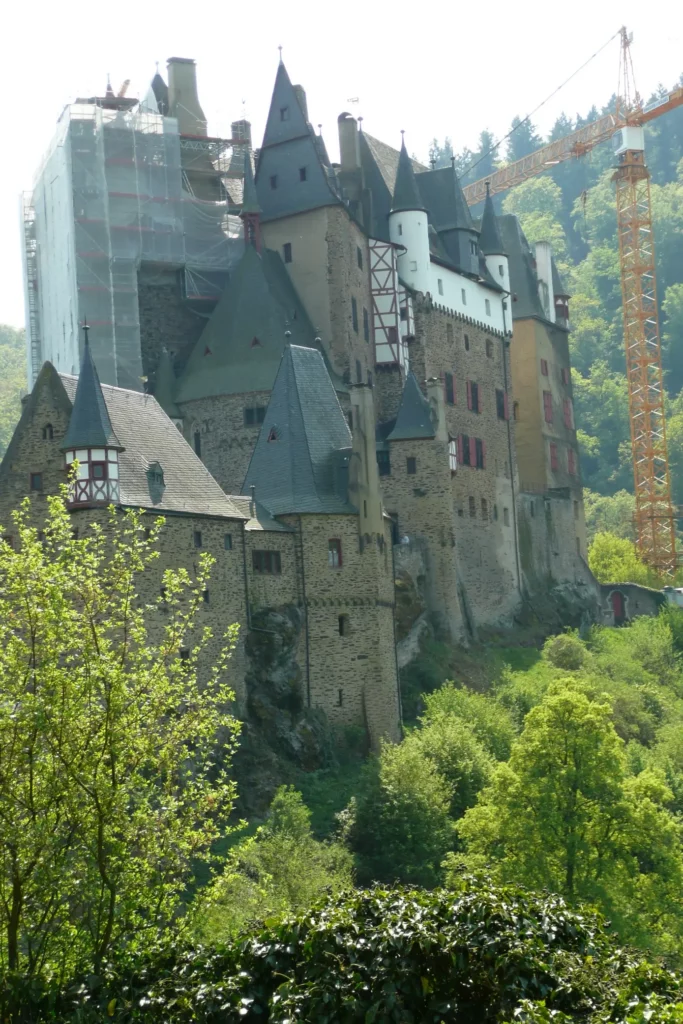
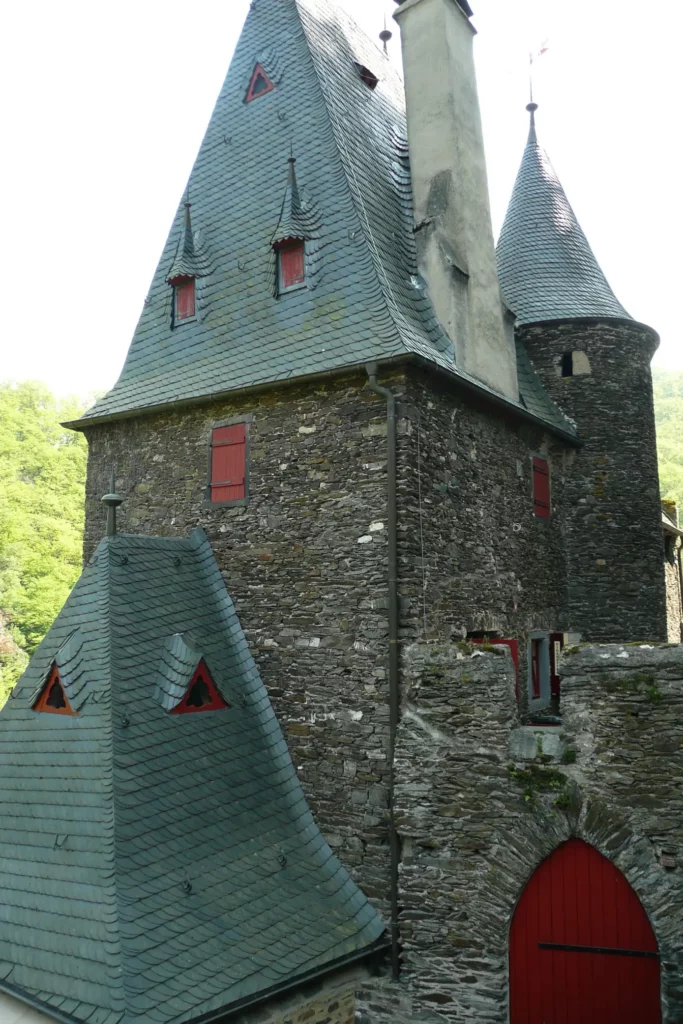
You can see antique furniture, a painting of Cranach the Elder, weapons, medieval toilets and medieval cuisine. The treasury exhibits items of artistic or historical value, 12-19 centuries, a little of everything: porcelain, figurines, rings, an old hunting bow, clothing.
The Eltz River bends around the rock on which the castle is built from three sides.
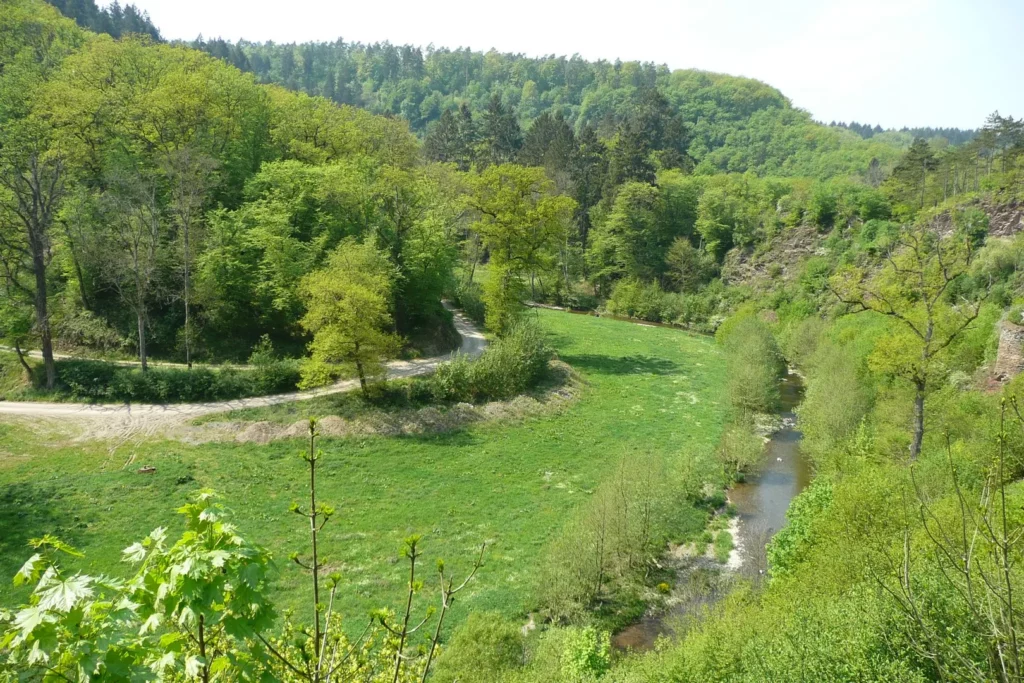
Cochem
Cochem is a very pleasant town: a river, a castle with turrets, small narrow streets with half-timbered houses. There are a lot of tourists, but not so many that one would like to get away from there as soon as possible.
The city has many wine courtyards, cellars and shops where you can taste and buy local wines.
Additional entertainment includes a thermal pool, a cable car and an amusement park with attractions (for age up to about 11) and animals.
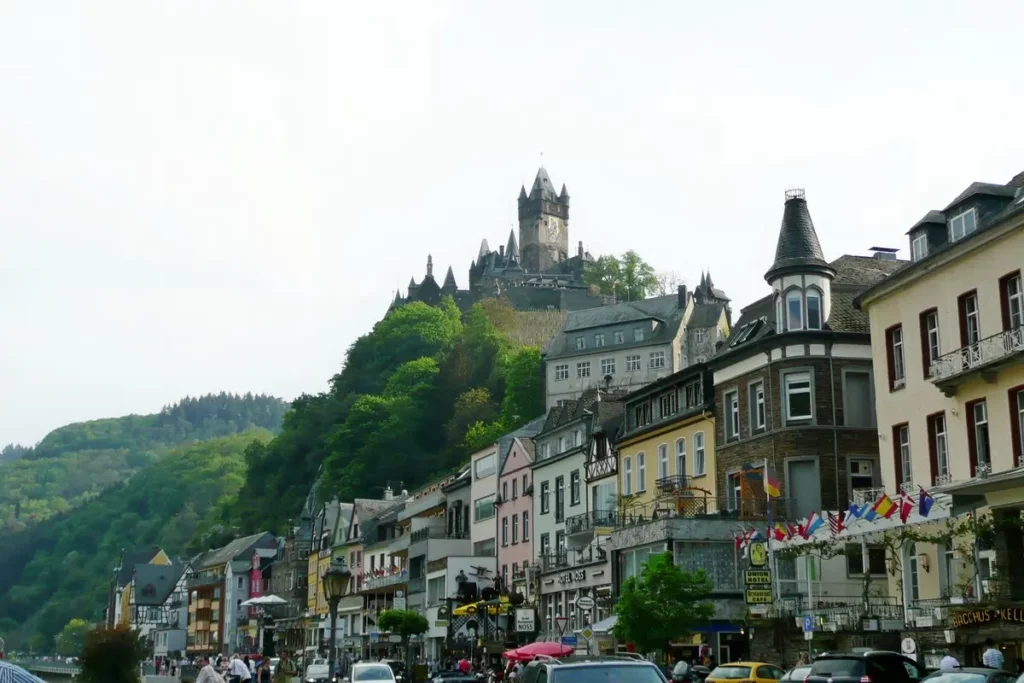
The castle, of course, has been restored, but this does not prevent it from being interesting. Wonderful interiors with Renaissance and Baroque furniture can be viewed during the guided tour.
The castle was built around 1000 by the Count of Palatinate. In 1151 it became imperial property and was ruled by the imperial ministries. From the end of the 13th century it was given as a coronation fee to the Archbishop of Trier. In 1689 the castle was blown up. In the middle of the 19th century the ruins of the castle were bought and rebuilt in the neo-gothic style.

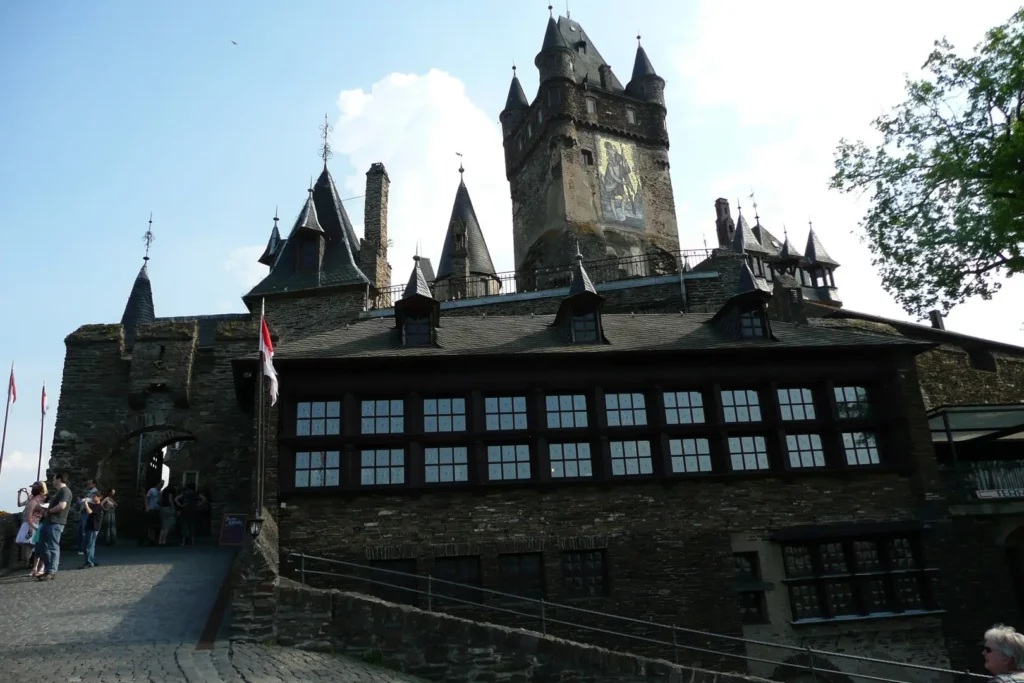

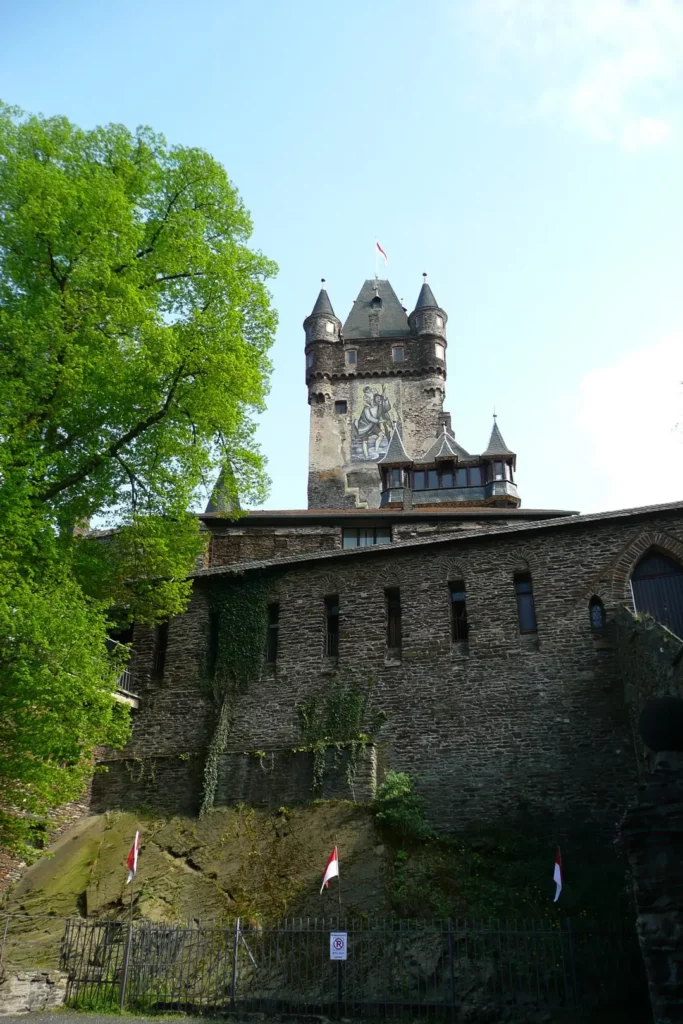
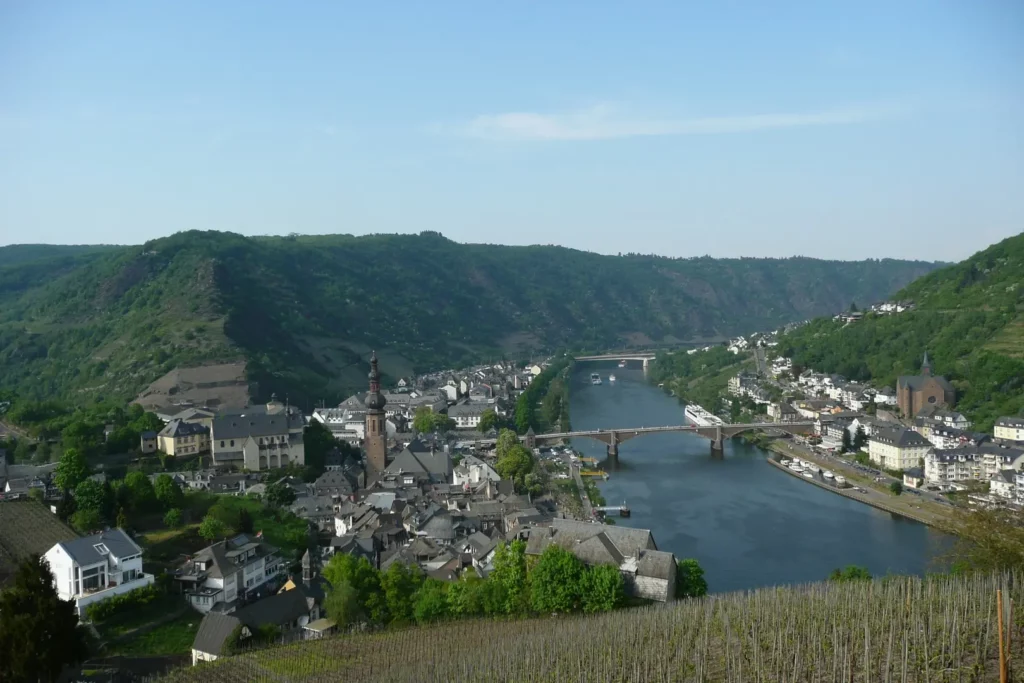
Trier attractions
Trier (Treves) is known as the oldest city in Germany, although this title is disputed by a couple of other German cities. The older generation will happily show their deep knowledge, remembering that Trier is the birthplace of Karl Marx. But Marx is not often mentioned here, preferring to focus on the Romans. Quite a lot of Roman monuments have survived here, and they are included in the UNESCO list, as are the two main churches – cathedral of St. Peter and the church of Our Lady.
Trier is suitable for half day / day sightseeing or as a base for exploring the area. In Trier itself, there is a compact pedestrian center starting from Porta Nigra.
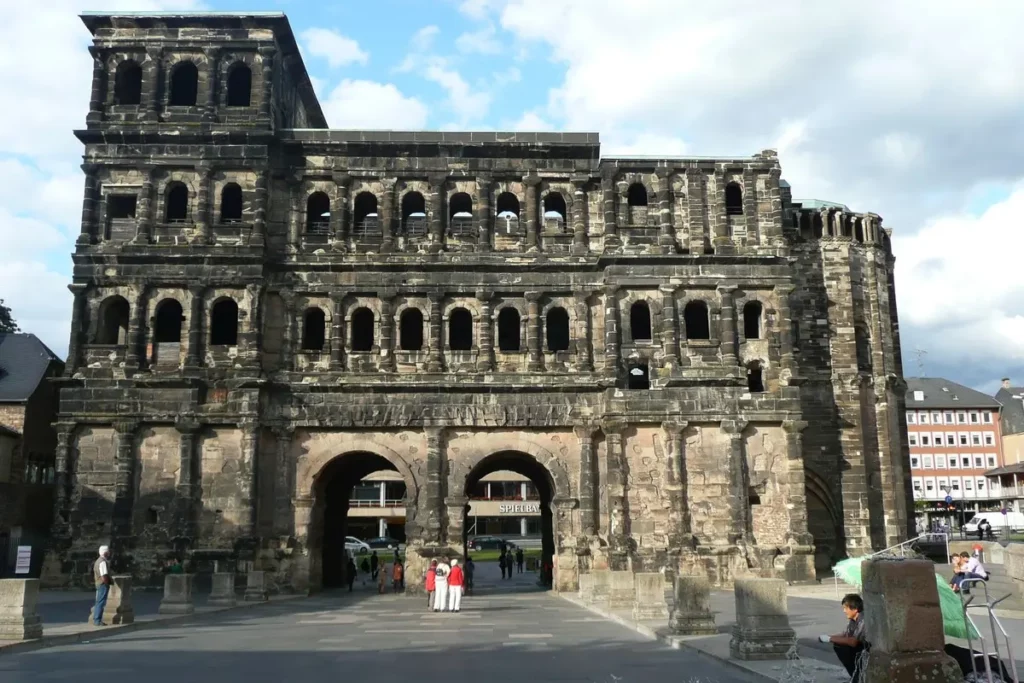
Short History of Trier
The city considers the date of its foundation to be the construction of the first wooden bridge across the Moselle, the remains of which date back to 17 BC. It is believed that the name of the city was given by the Celtic tribe of Treveri, whose dwellings and graves were found around Trier.
In 50 BC Julius Caesar conquered Gaul and at the same time with the Treveri tribe. A military camp was founded on Mount Petrisberg in 30 BC.
Under Emperor Augustus in 17 BC roads, a wooden bridge were built, the city was named Augusta Treverorum. In the first two centuries of our era, the city was actively developing, a circus, baths, an amphitheater, city walls with towers (including Porta Nigra) were built.
At the end of the 3rd – 4th centuries. the city served as the imperial residence, the population reached 60 thousand people.
From the beginning of the 4th century the history of the bishopric of Trier begins.
In the 5th century the city was conquered by the Franks.
From the beginning of the 9th century the bishops of Trier become archbishops. In 882, a devastating Viking raid severely damaged the city.
In 958, the rights of a market town were obtained.
From the 14th century the archbishops of Trier gained great influence in the politics of the Holy Roman Empire, in 1356 they became princes-electors.
In the 17th century the city suffered greatly from the Thirty Years War and later from the War of the Palatinate Succession and the wars with Napoleon. After the victory over Napoleon, Trier becomes a Prussian province.
In 1944 the city was badly damaged by the Allied bombing.
Black gate (Porta Nigra)
This is the only surviving gate from the 2nd century AD Roman city fortifications and the symbol of the city. In 1030 the Greek monk Simeon walled himself up in it. He spent 5 years in the wall until his death, after which he was canonized. In honor of Simeon, a temple was built nearby. Largely due to this, the gate survived.
Not far from the gate, one of the oldest buildings in Trier is the dwelling tower of the Three Magi (Dreikoenigenhaus, 1230). There are several such medieval residential towers of varying degrees of preservation in the city, they were built when there were no city walls yet, so the owners had to think about protection – they entered the tower immediately on the second floor.
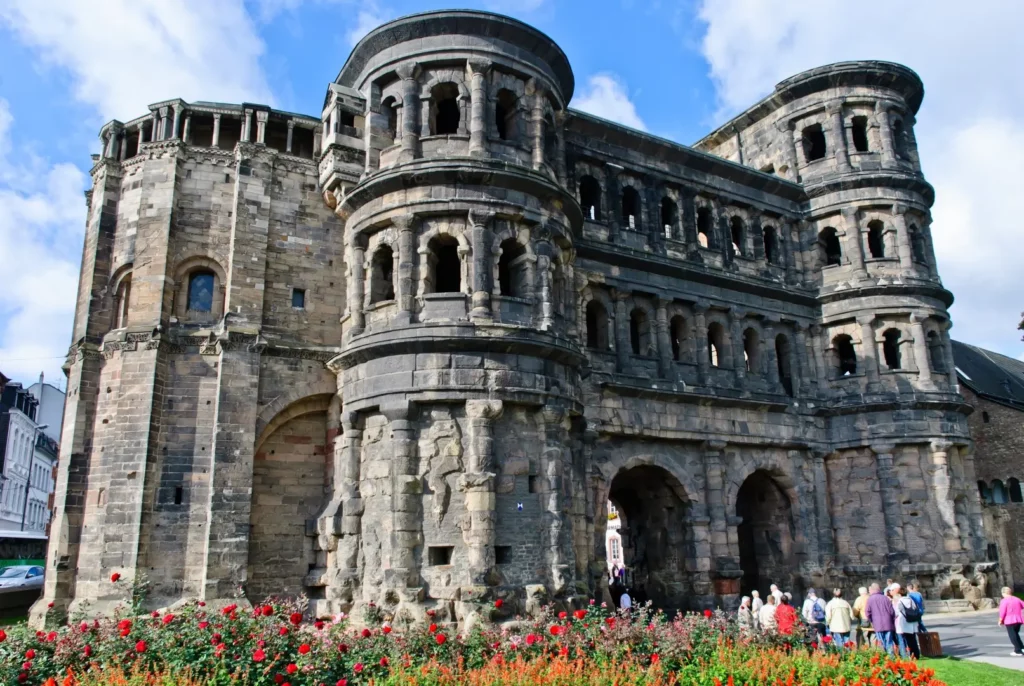
Main Market Square
From the gate, a pedestrian street leads to the Main Market Square (Hauptmarkt). It is the oldest trade intersection in Germany (958).
The fountain in the square (Petrusbrunnen) dates back to the 16th century. Church of st. Gandolf nearby – by the 14-16th centuries. The corner house with arches is called Steipe, it was built in the 15th century (and rebuilt after being destroyed in 1944) and served for city celebrations.
Steipe on the right.
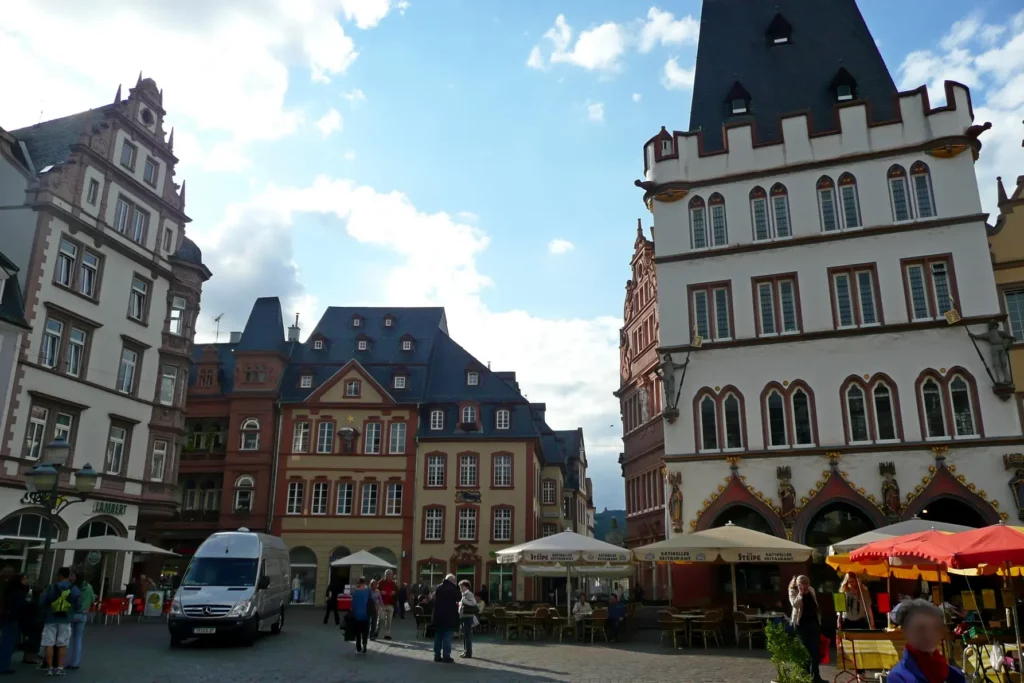
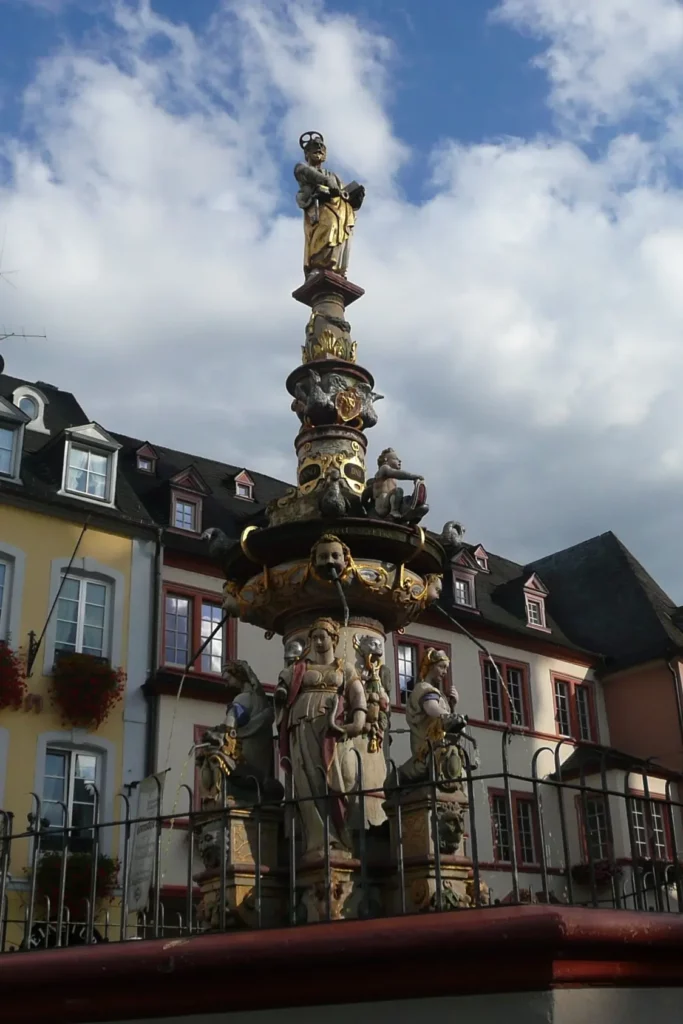

Follow me
After making a small detour from the Steipe towards the river, we come to the oldest medieval tower in Trier – the Frankenturm (11th century). And we will return again to the Market Square to go further to the cathedral.
Cathedral of St. Peter
A short lane leads to the Cathedral Square. There are two cathedrals here at once – the Cathedral of St. Peter and the Church of the Our Lady.
The Cathedral stands on the site of the Constantine Palace. In 330, a huge early Christian basilica was built on the site of the palace, occupying four times the area of the modern cathedral. Some of the structures of that church survived and became part of the modern building.
After the destruction of the 5th and 9th centuries, a Romanesque cathedral was built. Inside, valuable Christian relics are kept, including the tunic of Christ and the remains of St. Helena, according to legend, brought the tunic to Trier.
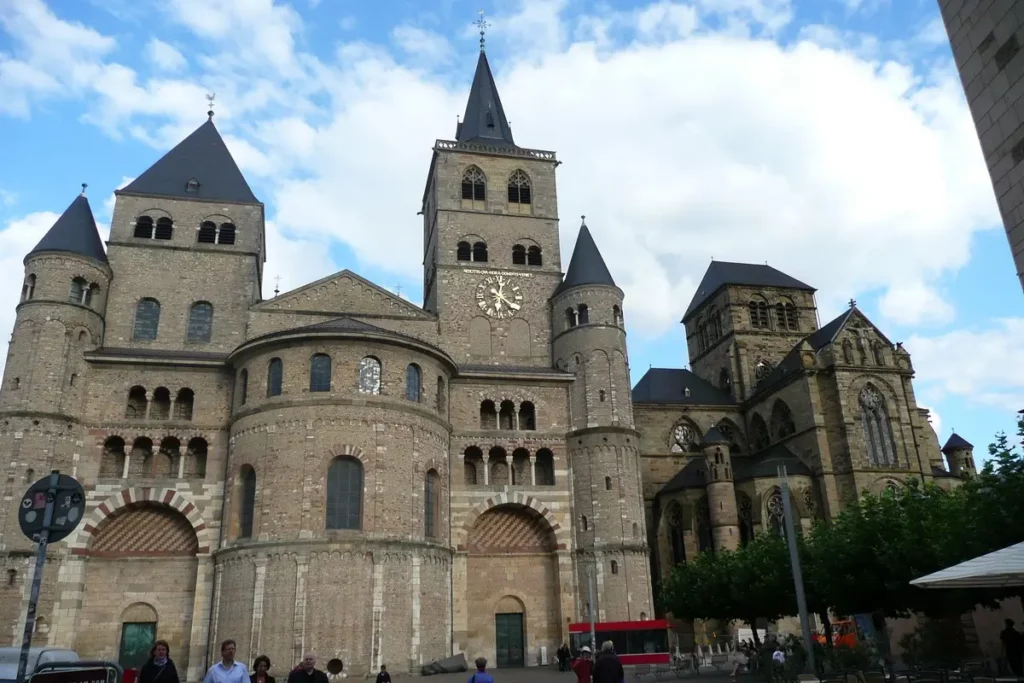


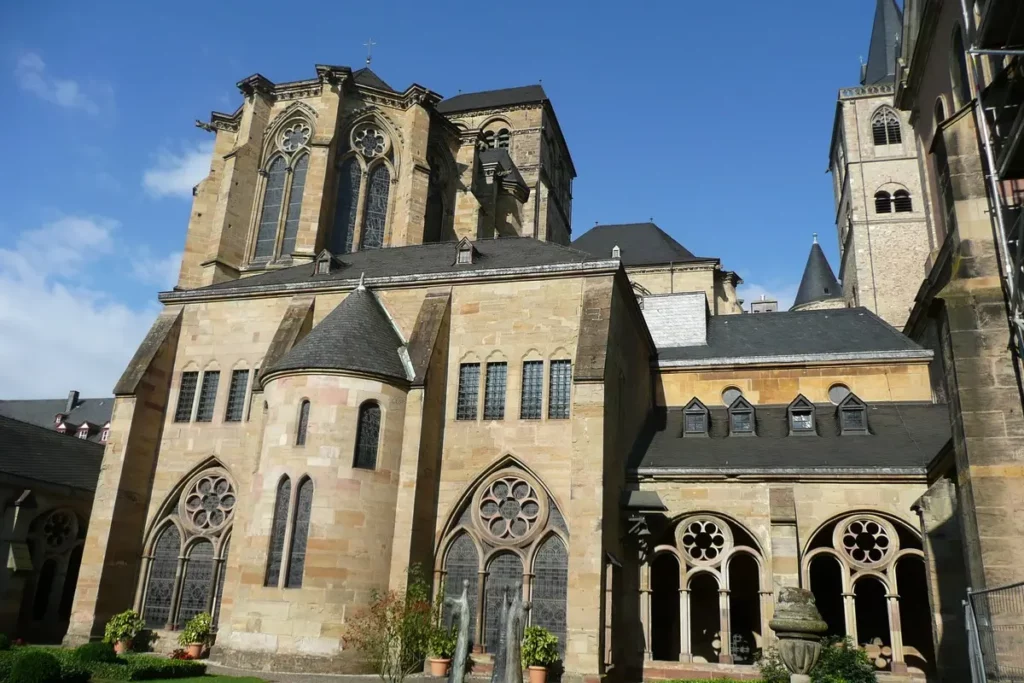

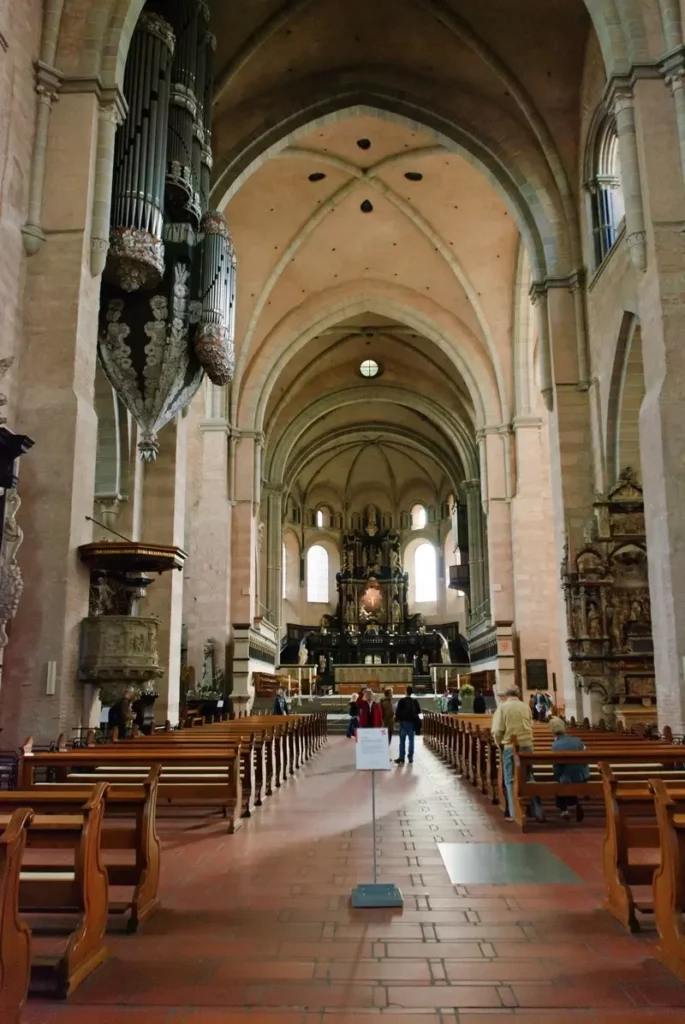

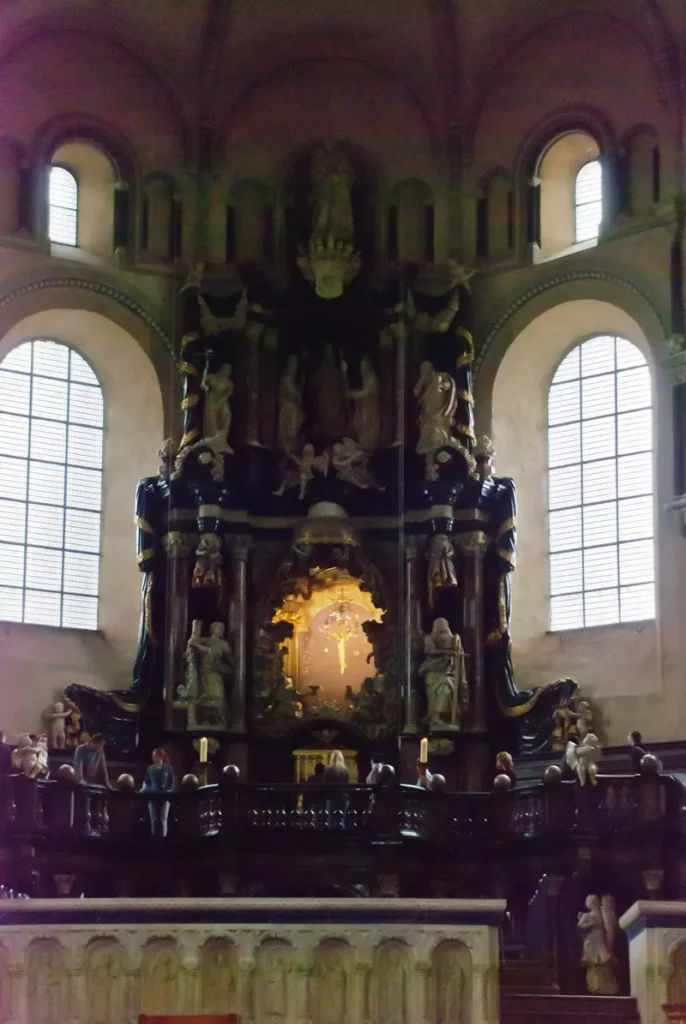
What remained of the ancient church after the construction of the Cathedral of St. Peter, was in the 13th century destroyed, and on this site was built the Gothic Church of Our Lady (Liebfrauenkirche) – it is considered the oldest Gothic church in Germany. Do not forget to look into the cloister – the entrance there is through a side door on the right.
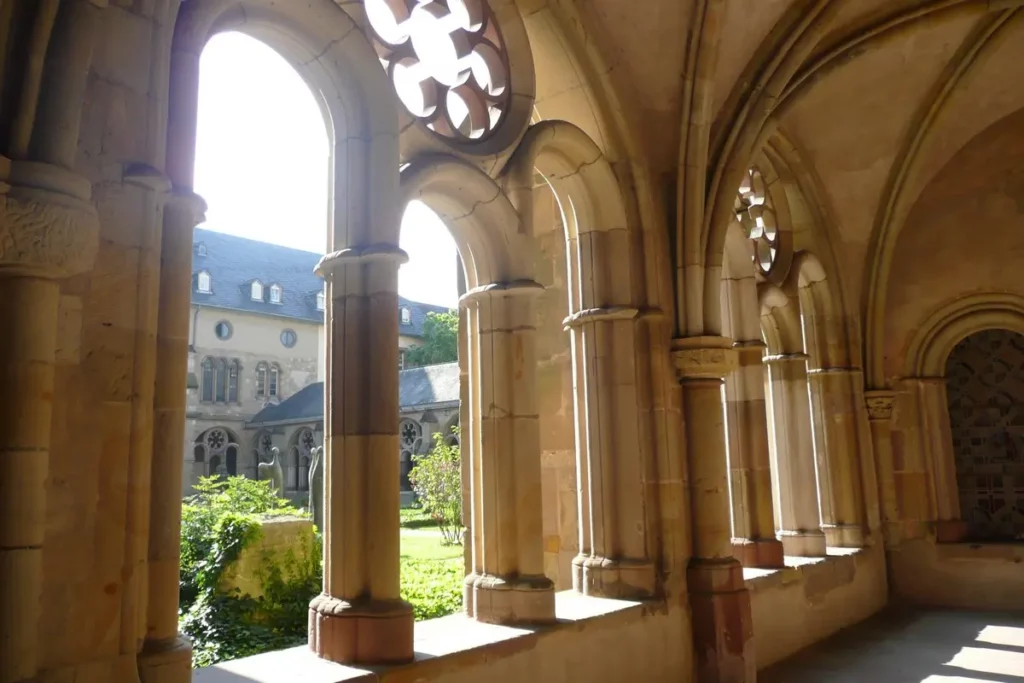
Basilica of Constantine and the Baths
From the cathedral square, we go to the Constantine Basilica (Konstantin Basilika).
The Throne Room of Constantine is an ancient basilica, the largest of the surviving structures of this kind since antiquity. Christian basilicas were subsequently created on this model.
The archbishop used the basilica for his own purposes and added a palace nearby. From the middle of the 19th century the building is used as a Protestant church.
The Rococo-decorated Archbishop’s Palace (Kurfürstliches Palais) is only accessible on occasion as it is used for administrative purposes.

Roman baths
A small park connects the palace with the imperial baths (Kaiserthermen). They are well preserved and can be visited, as is the nearby Historical Museum, which is considered to be a very good collection of finds from the Roman period.
Baths are now also serving as an open-air stage. There were also other baths in the Roman Treverorum – near the Forum and Barbara’s baths, they can also be viewed, although they are much worse preserved.
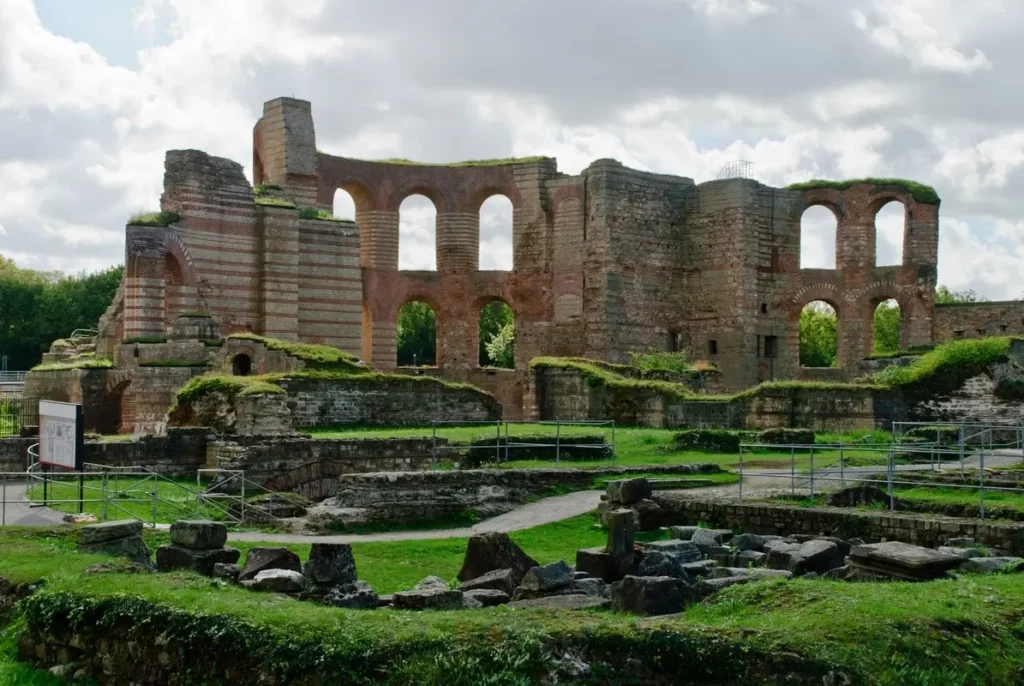
Another important ancient Roman structure, the amphitheater, is located not far from the imperial baths across the railway. Of course, this is not the Colosseum or the Amphitheater of Arles, for example. But if you have free time and desire, you can take a look at it.
Trier is a good base for exploring the surroundings – Moselle, Saar, Luxembourg.
Luxembourg (city) is just an hour away by train and you can easily explore it in a day.
A train runs along the Moselle, as well as along the Saar, occasionally pleasure boats also float. Both rivers are very beautiful. The Saar loop is included in computer screensavers, so most likely you are already familiar with it.
For trips north of Trier, to the Eifel region, you will need a car.
Castles on the Middle Rhine on the map. 1. From Rüdesheim to Bacharach
Luxembourg
Do you enjoy the site without cookies? This means that I work for you at my own expense.
Perhaps you would like to support my work here.
Or change your cookie settings here. I don’t use personalized ads

